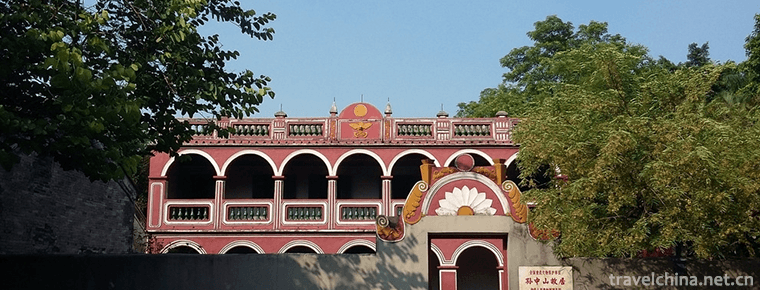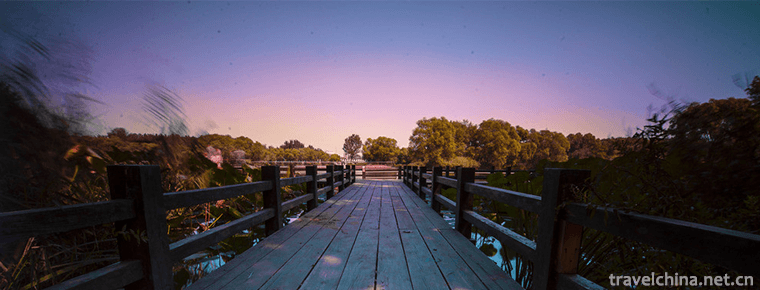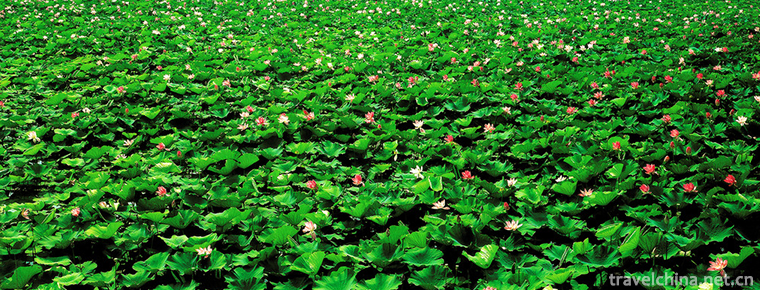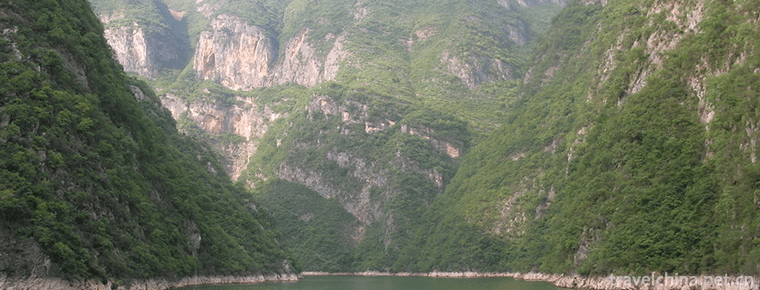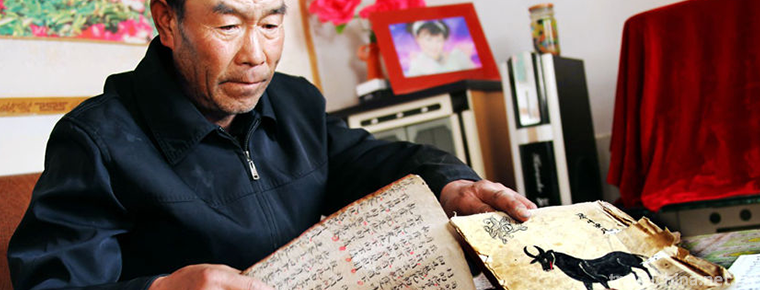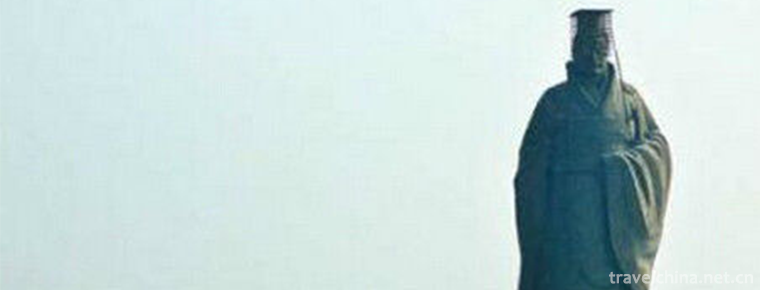Dajing gate
Dajing gate
Dajinmen, the national key cultural relics protection unit. Located at the northern end of Zhangjiakou City, it was built in the first year of Shunzhi in the Qing Dynasty (1644 A.D.) and has a history of more than 350 years. Dajimen is one of the four major crossings of the Great Wall of China, and it has played an important role in history.
Development history
The Great Wall of Zhangjiakou City was built in the 21st year of Chenghua Ming Dynasty (1485 A.D.). It is 450 kilometers long. The Great Wall in Qiaoxi is 3700 meters long. It is built along the mountain. It is made of stone and mortar. Outside the border, the East and West Taiping Mountains confront each other with a very dangerous terrain. Historically, this area has been an indispensable place for military strategists. It is the main road connecting the frontier fortress and the interior of Kyoto. At the same time, Dajinmen was also a place for friendly exchanges among Mongolian, Han, Hui and Tibetan cultures. In the Qing Dynasty (1644-1911), Dajinmen was a very important commercial city in the north, known as "Lulu Commercial Port" and "Pidu". Dajimen, as the northern gate of Kyoto from ancient times, connecting the frontier fortress and the mainland, has always been a place for military strategists to compete for. It is also the border of transportation and trade between the Mongolian and Han peoples. It has played an important role in developing the friendly relations between the Mongolian and Han peoples and in communicating the trade between the mainland and the frontier fortress. Due to the prosperity of Zhangjiakou's economy, the Qing government built the first practical railway in China, the Beijing-Zhangkou Railway, from Beijing to Zhangjiakou in 1909.
Dajimen is a very special gateway among the many passes of the Great Wall of China. Academic circles at home and abroad have been listed as important as Shanhaiguan, Juyongguan and Jiayuguan. The gateway of the Great Wall of China is called "Guan" and "Kou", but only Zhangjiakou is called "Jingmen", which contains the charm of "commercial culture" and "military culture", and also the historical origin of ethnic integration. From the five years of Longqing in Ming Dynasty, the border trade market known as "Gong Shi" and "Tea-horse Mutual Market" gradually formed in the area of Yuanbaoshan outside Zhangjiakou Dajimen. Livestock, fur, medicinal materials, woolen fabrics and silverware from Mongolian grasslands and the hinterland of Europe have been replaced here with silk, tea, porcelain and sugar. Outside the border, they have become the inland ports of international barter trade in northern China. The feudal dynasty was bounded by the Great Wall and the gate, and the foreigners who did business could only trade outside the city. "Border Gate" means the border gate. In 1927, Governor Chahar commanded Gao Weiyue to write on the lintel of the border gate the four big characters of "Dahaohe River and Mountain", vigorous and powerful, quite spectacular, adding charm to the border gate.
War and peace, life and death, prosperity and desolation, recur and change here. Dajimen has gone through many vicissitudes, which is the witness of Zhangjiakou's history. Many important historical events are closely related to Dajimen. Dajimen witnessed not only the weakness of the old China, but also the prosperity of the new China and the great changes in the history of Zhangjiakou. Zhangjiakou people are proud of Dajimen, which naturally becomes the symbol of Zhangjiakou.
Main attractions
The shape of the Great Wall Gate is simple and heavy, and its rough and vigorous, limited and unconstrained momentum is unique in the whole Great Wall culture, and it is the main road to Koubei. In order to protect cultural relics and historic sites, the municipal and district governments have begun to carry out comprehensive rehabilitation and comprehensive development of the Dajimen, making the area around the Dajimen a tourist attraction. The tourist summer resort is a brick arch with stone foundations. The gate wall is 12 meters high, the bottom is 13 meters long and the width is 9 meters. There are two wooden iron gates. The top is a platform, 12 meters long and 7.5 meters wide. Outside there is a 1.7-meter-high stack, inside there is a 0.8-meter-high parapet. There are four characters of "Dahao River and Mountain" written by the local military and political leaders in 1927. They are vigorous and spectacular. Legend has it that Emperor Kangxi of the Qing Dynasty returned to Kyoto on an expedition. He went there at night and slept outdoors. After that, Wolong Pavilion and General Pavilion were built.
Scenic spot
In 2010, it was upgraded to national 4A scenic spot, the Ming Great Wall of West Taiping Mountain, the Great Wall of Northern Wei Dynasty, Xiaojimen, Dajimen, Erlang Temple, Guandi Temple, Stone Carvings, Yongshun Gate of Laiyuan Fort, etc.
By 2012, Dajinmen and Zhangjiakou Fort (in the fort), Laiyuan Fort have declared national cultural relics as a whole, and a number of historically valuable cultural relics and buildings, such as Lecture Platform, Sanniangzi Temple, Guanyue (Guanyu and Yuefei) Temple, Mountain Temple and Shuiguan Temple, are also actively protected, renovated and developed. From 2010 to 2011, the first phase of the whole renovation plan will be completed, and the Great Wall of Dajinmen will initially restore its historical features. In the future, Dajimen Great Wall and Zhangjiakou Fort will become the ancient city of Heping Yao, Shanhaiguan and other well-known Chinese traditional Ming and Qing architectural complex, and become a beautiful landscape.
Practical information
Ticket information
20 yuan, free from the West Taiping Mountains.
Traffic information
External traffic
Airplanes, trains, cars, self-driving.
Self driving route
(1) Dajiemen has superior geographical location and convenient transportation. It connects Beijing and Tianjin in Nantong with Jinmeng in the north. National Highway 110 and 207 and Beijing-Baotou Railway pass through it. Xuanda, Danla, Beijing-Zhangzhou and Zhangcheng expressways meet here.
(2) Beijing-Badaling Expressway-Beijing-Zhangjiakou Expressway
From Beijing South Railway Station to Zhangjiakou Railway Station, change to city bus to Dajie
Internal traffic
There are 2, 13, 16, 32 and 301 buses leading to the Dajimen scenic spot, which is located in Zhenggou Street, Zhangjiakou City. The average bus departure time is 10 minutes or 20 minutes, and the fare is one yuan.






-
Sun Zhongshans hometown
Sun Yat-sen's hometown is located in Cuiheng Village, Zhongshan City, Guangdong Province. It is surrounded by mountains on three sides: south, north and west, East by the Pearl River Estuary.
Views: 157 Time 2018-12-12 -
Chaoyang Park Beijing Sun Park
Chaoyang Park in Beijing is a comprehensive and multi-functional cultural recreation and entertainment park with gardening as the main part. It is the largest city park within the Fourth Ring Road in .
Views: 118 Time 2019-01-05 -
Luliang Colorful Sand Forest
Luliang color sand forest is a national AAAA tourist area, 18 kilometers away from Luliang County. 108 named scenic spots are located in the "Y" shaped canyon, with a total area of 180 hecta.
Views: 132 Time 2019-02-06 -
Weishan Lake National Wetland Park
Weishan Lake National Wetland Park, located in the southern part of Weishan County, Jining City, Shandong Province, is less than 3 kilometers away from the urban area..
Views: 195 Time 2019-02-22 -
Little Three Gorges
Wushan Xiaoxiao Three Gorges is the general name of Changtan Gorge, Qinwang Gorge and Sanzhuang Gorge on Madu River, a tributary of Dicuixia of Daning River. Wushan Xiaoxiao Three Gorges is known as t.
Views: 189 Time 2019-02-25 -
Hexi treasure roll
Hexi Baojuan, a traditional folk literature in Liangzhou District of Wuwei City and Suzhou District of Jiuquan City, Gansu Province, is one of the national intangible cultural heritages..
Views: 119 Time 2019-05-03 -
Shiwan Ceramic Sculpture Technology
Shiwan pottery sculpture has a long history. It first appeared in the Eastern Han Dynasty. It reached its peak in the Song Dynasty. After the founding of New China, the manufacturing level and artisti.
Views: 135 Time 2019-06-15 -
Legend of Su Xian
The legend of Suxian is a local folklore with a long history. Su Xian, Ming Lian, from Guiyang. Su Da lost his father in his early years and depended on his mother for his life. One year, the plague w.
Views: 196 Time 2019-06-17 -
Baoguang Temple
Baoguang temple is located in Xindu District, Chengdu City, Sichuan Province, China. It is one of the Buddhist temples with a long history, large scale, complete structure and quiet environment..
Views: 114 Time 2020-11-05 -
Panzhihua after liberation
After liberation, Miyi County was established in some areas of Huili and Dechang in 1951, and renamed as Miyi County the next year, which was subordinate to Xichang District of Xikang province (due to its unique climate, rich products, especially rich in rice, and three crops a year, .
Views: 135 Time 2020-12-14 -
Panzhihua famous specialty
The snacks in Panzhihua are mainly Sichuan flavor. The most popular snack in Panzhihua is mutton rice noodles. The rice noodles cooked by pure mutton soup, together with bean paste, pepper, millet and other seasonings, have a unique and representative flavor.
Views: 290 Time 2020-12-14 -
Yibin science and technology
In 2019, there are 34 new high-tech enterprises, 13 provincial science and technology achievements transfer and transformation demonstration enterprises, 2 provincial science popularization bases and 6 Municipal Science Popularization base.
Views: 314 Time 2020-12-18
